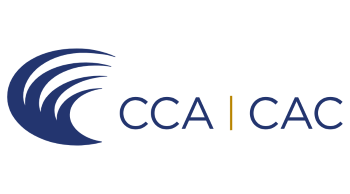Canada risks “severe economic and social consequences” if it doesn’t improve innovation performance: CCA report
 Canada continues to fall further behind peer countries in key measures of science, technology, and innovation performance, according to a report from the Council of Canadian Academies (CCA).
Canada continues to fall further behind peer countries in key measures of science, technology, and innovation performance, according to a report from the Council of Canadian Academies (CCA).
The report details the daunting challenges facing Canada that could ultimately threaten the country’s economic prosperity and standard of living.
“The urgency of the situation has now reached a critical level,” said the expert panel that prepared the report.
“Without substantial improvements to its STI (science, technology, and innovation) ecosystem, Canada risks severe economic and social consequences.”
Commissioned by Innovation, Science and Economic Development Canada (ISED), The State of Science, Technology, and Innovation in Canada 2025 provides a comprehensive, data-driven analysis of Canada’s strengths and weaknesses in science, technology, and innovation and how we compare internationally.
Canada still lacks the effective approaches to support the development and commercialization – across the continuum from research to deployment – of the most promising areas that could improve national competitiveness and provide greater overall economic and societal benefits, the report said. “Canada is not translating upstream strengths in research and talent into downstream economic benefits.”
 “Put simply, Canada is facing a period of unprecedented challenges with a weak hand – declining productivity and erosion of our standard of living arising in large measure from the steady worsening of our innovation performance,” chair of the expert panel Dr. Ilse Treurnicht (photo at right), PhD, entrepreneur and former CEO of MaRS Discovery District, said in a foreword to the report.
“Put simply, Canada is facing a period of unprecedented challenges with a weak hand – declining productivity and erosion of our standard of living arising in large measure from the steady worsening of our innovation performance,” chair of the expert panel Dr. Ilse Treurnicht (photo at right), PhD, entrepreneur and former CEO of MaRS Discovery District, said in a foreword to the report.
A high-performing science, technology, and innovation ecosystem is essential to the well-being of all people in Canada and the country’s ability to compete on a global stage, according to the 14-member expert panel’s report.
In the context of a worsening productivity crisis, a fraught relationship with its largest trading partner, stubbornly low private sector R&D spending, and lagging technology adoption across the economy, reversing Canada’s weak innovation performance is more urgent than ever, their report said.
“We face a serious and widening gap between our potential and performance at a critical juncture in the nation’s history,” Treurnicht said.
“Without ambitious and coordinated action, our standard of living and vaunted social solidarity could both erode rapidly,” she said.
Without an enhanced emphasis on technology adoption, access to domestic risk capital, and tailored interventions to grow areas of strength, Canada's innovation ecosystem will likely continue to underperform, the report noted.
As a result, the nation’s ability to deliver quality public healthcare and education, job opportunities, and affordable housing will be jeopardized, the expert panel warned.
Key findings of the CCA’s report
The report’s key findings are:
- R&D spending is lagging. Canada’s R&D intensity has declined since 2000, while peer countries have increased their investments. Business and government R&D spending are declining and are both far below the Organisation for Economic Development and Co-operation countries’ average.
There is relatively high R&D expenditures among a segment of small and medium-sized Canadian businesses, but a lower share of R&D performed in large enterprises.
Foreign multinational firms account for up to 44 percent of Canada’s R&D expenditures and are increasing their R&D expenditures in Canada at a faster rate than domestic firms.
Innovation by Canadian businesses has decreased noticeably in recent years, despite increased expenditures on innovation activities. The most significant and persistent obstacles to innovation reported by firms are uncertainty and risk, and lack of skills.
In addition, Canadian businesses have limited access to domestic financing.
- Canada’s higher education sector is a rare bright spot. Canadian universities continue to produce world-class talent and research, with high levels of international collaboration and impact. However, this competitive edge is at risk and Canadian postsecondary institutions often struggle to support the transfer of technologies to new companies.
Canada has a strong talent base. Sixty-three percent of Canadians have received postsecondary education, compared with the OECD average of 41 percent.
However, 12 percent of Canadians have a graduate degree, compared with the OECD average of 15 percent.
Canada has 10.9 researchers per thousand, compared with the OECD average of 9.5. However, Canada has 4.2 per thousand R&D technicians and support staff, compared with the OECD average of 4.7
Canada ranks 9th in contributing to world research, with 3.6 percent of the world’s publications. Canada’s publications output grew nine percent from 2012-2017 to 2018-2023.
The country is ranked 6th globally for publication impact. Over 50 percent of publications by Canadian researchers include a foreign co-author.
Canada’s top-publishing Census Metropolitan Areas (CMAs) largely correspond to the location of the country’s top universities. Five CMAs – Toronto, Montreal, Vancouver, Ottawa-Gatineau, and Edmonton – account for nearly half of all of Canada’s publications.
Canada’s most impactful CMAs (as measured by the citation impact of its publications) are Kitchener-Cambridge-Waterloo, followed by Toronto, Vancouver, Calgary and Montreal, though several other CMAs have a publication impact above the world average.
- Aggressive AI adoption could transform Canada’s STI ecosystem. Canada has played a leading role in the development of AI but is losing ground in adoption and commercialization.
Both supply- and demand-side policies will be required to facilitate broad adoption of AI, as well as AI literacy, talent development and upskilling through targeted education and training programs to strengthen Canada’ workforce.
Canada has played a leading role in the development of AI, but is losing ground in adoption and commercialization of AI, the report noted.
Moreover, there is low and declining adoption of technology overall in Canada. The acquisition, development and use of advanced technologies have substantially decreased in recent years, particularly among SMEs.
- Despite strengths in research, Canada struggles to translate discoveries into commercial success. The country lacks large, innovative firms and faces persistent barriers in scaling startups and retaining intellectual property.
The most commonly cited reason – by a wide margin – for not using advanced technologies is that they are not viewed as applicable or necessary for the business.
“The lack of [domestic] absorptive capacity to utilize innovations is a key barrier to translating Canadian strengths in S&T into innovation and productivity, wealth creation, and broader benefits to society,” the expert panel said.
Canada’s innovation ecosystem lacks coordination, alignment and focus
Canada ranks 8th globally for United States Patent and Trademark Office (USPTO) patents, accounting for 1.6 percent of these patents. Canada’s patent citations rank 4th, on par with the world average.
Canada’s patents output grew five percent from 2012-2017 to 2018-2023, slower than the global average.
The CMAs responsible for the largest share of patents in Canada are Toronto, Kitchener-Cambridge-Waterloo, Montreal, Vancouver and Ottawa-Gatineau.
Growth in patenting activity is higher than the world average for several CMAs in Canada, including Halifax, Saskatoon, Montreal, Calgary, Toronto, Vancouver, and Quebec City.
However, most CMAs have impact values below the world average.
- Canada’s startup ecosystem is increasingly concentrated around larger CMAs like Toronto, Vancouver and Montreal.
Constrained financing for early-stage startups and those looking to scale rapidly results in firms seeking out foreign investors, mainly from the U.S.
Financing has predominantly gone to Information and Communications Technology-based startups, “perhaps reflecting a lack of large, stable venture capital for more capital-intensive industries,” the report said.
Based on an Australian study, Canada shows considerable strengths and impact in 26 of 64 critical technologies identified as having the ability to significantly affect a country’s economic prosperity, social cohesion, or national security.
“Importantly, these strengths overlap significantly with Canada’s Sensitive Technology List, which includes are such as quantum technologies, advanced sensing and surveillance, energy technologies, and AI, among others.”
- Decision-makers in Canada must navigate complex and fast-moving circumstances despite incomplete and dated frameworks and metrics for critical performance indicators. The innovation ecosystem is dynamic and can shift rapidly, requiring more agile and ever-evolving interventions; up-to-date insights are essential to calibrate these interventions.
In general, Canada’s distributed STI ecosystem enables success by supporting supply-side inputs such as basic and applied research, education and skills development, and support for entrepreneurship and startups, the report said.
However, the report pointed out that coordination and alignment problems, as well as a lack of focus on demand-side policy interventions, have made it difficult to translate those strengths into the scale-up and growth of innovative domestic firms that remain in Canada.
There is a lack of focus in science, technology, and innovation policies and programs, the report noted. “There is a general lack of alignment in Canada’s areas of STI strength across publications, patents and R&D expenditures.”
“STI policy in Canada tends to be characterized by a ‘peanut butter’ approach that seeks to spread resources evenly across the country on the grounds of fairness, rather than strategically cultivating areas of strength and growth.”
As of 2021, the federal government had reported 134 distinct federal programs providing a combined $4.5 billion in innovation supports to 33,000 businesses.
“Simplifying the suite of innovation supports on offer may improve the clarity, focus and performance of Canada’s ecosystem,” the report said.
Strategies to support innovation vary across industries. Successful innovation often hinges on identifying specific areas of struggle and establishing tailored policy interventions in response, the report pointed out.
There are several areas where a more focused approach could deliver better outcomes, including life sciences and biotechnology, clean tech, and deep tech, the report said.
Current ecosystem doesn’t adequately support graduates, scientists and scholars
The business model used to fund postsecondary institutions is fragile and relies heavily on student fees to support both research and operations, according to the report.
Current federal immigration restrictions are limiting the financial support provided by international students and expenditures per student are falling.
“Even as Canada has an opportunity to recruit top researchers and students from the United States, its [Canada’s] current system of research does not adequately resource the careers of its promising graduates, scientists and scholars,” the report said.
Canada has difficulties retaining highly qualified personnel, which is often referred to as the “brain drain.”
While Canada is successful at attracting foreign talent for post-graduate training, many go on to leave the country for employment opportunities, resulting in a net drain of highly qualified personnel.
In addition, Canadian postsecondary institutions often struggle to support the transfer of technologies to new companies.
Many of the ways that STI performance is conceived of and measured reflect out-of-date frameworks that emerged in an earlier economic reality, the report said.
Today, digitalization, the intangibles economy, and the dominance of services necessitate and can enable new approaches to capturing the structure and dynamics of current STI ecosystems. Many important parts of the STI ecosystem are not currently measurable.
What is often being measured is the research and invention ecosystem – roughly, the creation of new knowledge or technology – rather than the innovation ecosystem, which involves the use and impact of relevant knowledge and technology.
“The panel feels strongly that we need to dramatically upgrade our capacity to track and report real-time changes in our innovation economic domestically and globally to help Canadian decision-makers navigate these turbulent times,” Treurnicht said.
An innovation-performance tracking system that matches today’s context would support a more nimble and responsive science, technology, and innovation ecosystem.
Such a tracking system should include:
- Relevant, real-time data and analysis.
- Foresight.
- Deep dives on emergent issues and rapidly changing conditions, including cross-sectoral dialogues.
“The series of reports the CCA has published on this topic over the last two decades paint a picture of a country that excels in research but falls short when it comes to retaining the value of its innovations,” Tijs Creutzberg, president and CEO of the CCA, said.
“Given the enormity of the challenges we face today, up-to-date insights into the performance of Canada’s research and innovation ecosystems are critical to informing sound decisions that can help ensure the country’s continued prosperity.”
R$
| Organizations: | |
| People: | |
| Topics: |
Events For Leaders in
Science, Tech, Innovation, and Policy
Discuss and learn from those in the know at our virtual and in-person events.
See Upcoming Events
You have 0 free articles remaining.
Don't miss out - start your free trial today.
Start your FREE trial Already a member? Log in
By using this website, you agree to our use of cookies. We use cookies to provide you with a great experience and to help our website run effectively in accordance with our Privacy Policy and Terms of Service.





